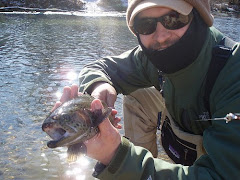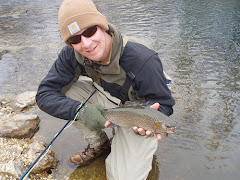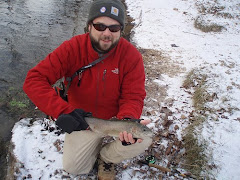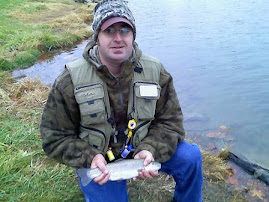
Saturday, August 9, 2008
Thursday, August 7, 2008
Nice Little Read from Midcurrent
Fly-casting not in the Olympics, but enjoyed in 29 nations
Thursday, August 7, 2008
MORGAN LYLE
I’m sorry to say that as the Olympic Games get under way in China this week, there won’t be a fly-casting competition.
Nor will there be lifesaving, surfing or powerboating — although all those activ ities have international federations that are recognized by the International Olympic Committee.
Of course, casting has a federation too, and it’s been trying to break into the Olympics for decades, said Dale Lanser, exec utive secretary of the American Casting Association.
“The American Casting Association, starting 40 or 50 years ago, has put forth the effort to join the Olympic Committee, demonstrated the sport of casting as a new event, etc, etc, etc.,” he said. “The bottom line as I understand the Olympic effort for a new sport to be recognized and become an official event is the number of countries in the world that actually do participate in the event. The magic number of countries is unknown to me, but my guess is 50 to 75 countries are needed.”
If that’s the case, we’re short of the mark. The International Casting Sport Federation lists 29 countries as members. Twenty-two are in Europe; the others are the United States, Canada, Australia, Japan, South Africa, New Zealand and Singapore. Still, the list shows the global appeal of fly-casting; every continent is represented except South America and Antarctica. (South America’s an odd omission, since there’s plenty of fly-fishing there.)
The American Casting Federation and the International casting Sport Federation both run tournaments for spinning rod and fly rod casting. There are other clubs devoted to just one or the other, and some sanction competition with bait-casting and spinning rods.
When the modern-day Olympic Games began in 1896, competitive fly-casting was already well established. In 1906, an Irishman named John Enright set a world record by casting a salmon fly 152 feet at an Anglers Club of New York tournament in Central Park. The New York Times reports Enright used a 20-foot greenheart rod that weighed four pounds. That would probably be in the two-handed rod category in today’s events, and Enright’s toss would be about half of what today’s casters can cast.
By the way, the famous George M.L. LaBranche came in second in the accuracy competition in that 1906 event and eighth in the trout-fly distance event, presumably single-handed casting, at 77 feet.
According to the ACA, Steve Rajeff holds the current American record for men’s single-handed casting — an astonishing 236 feet — as well as the two-handed record of 290 feet. Pamela Peters of Ohio holds the women’s single-handed record of 125 feet and the two-handed record of 178.
I suppose the International Olympic Committee can’t allow every obscure sport in the world into the Games. They have to draw the line somewhere, and at the mom ent, fly-casting is on the other side of it.
I like the current list of Olympic sports well enough, and I’ll check in on the Beijing Games from time to time. But if fly-casting ever does manage to become an Olympic sport, you can bet I’ll be glued to the tube. If you can cast a fly 236 feet, you deserve a gold medal.
Thursday, August 7, 2008
MORGAN LYLE
I’m sorry to say that as the Olympic Games get under way in China this week, there won’t be a fly-casting competition.
Nor will there be lifesaving, surfing or powerboating — although all those activ ities have international federations that are recognized by the International Olympic Committee.
Of course, casting has a federation too, and it’s been trying to break into the Olympics for decades, said Dale Lanser, exec utive secretary of the American Casting Association.
“The American Casting Association, starting 40 or 50 years ago, has put forth the effort to join the Olympic Committee, demonstrated the sport of casting as a new event, etc, etc, etc.,” he said. “The bottom line as I understand the Olympic effort for a new sport to be recognized and become an official event is the number of countries in the world that actually do participate in the event. The magic number of countries is unknown to me, but my guess is 50 to 75 countries are needed.”
If that’s the case, we’re short of the mark. The International Casting Sport Federation lists 29 countries as members. Twenty-two are in Europe; the others are the United States, Canada, Australia, Japan, South Africa, New Zealand and Singapore. Still, the list shows the global appeal of fly-casting; every continent is represented except South America and Antarctica. (South America’s an odd omission, since there’s plenty of fly-fishing there.)
The American Casting Federation and the International casting Sport Federation both run tournaments for spinning rod and fly rod casting. There are other clubs devoted to just one or the other, and some sanction competition with bait-casting and spinning rods.
When the modern-day Olympic Games began in 1896, competitive fly-casting was already well established. In 1906, an Irishman named John Enright set a world record by casting a salmon fly 152 feet at an Anglers Club of New York tournament in Central Park. The New York Times reports Enright used a 20-foot greenheart rod that weighed four pounds. That would probably be in the two-handed rod category in today’s events, and Enright’s toss would be about half of what today’s casters can cast.
By the way, the famous George M.L. LaBranche came in second in the accuracy competition in that 1906 event and eighth in the trout-fly distance event, presumably single-handed casting, at 77 feet.
According to the ACA, Steve Rajeff holds the current American record for men’s single-handed casting — an astonishing 236 feet — as well as the two-handed record of 290 feet. Pamela Peters of Ohio holds the women’s single-handed record of 125 feet and the two-handed record of 178.
I suppose the International Olympic Committee can’t allow every obscure sport in the world into the Games. They have to draw the line somewhere, and at the mom ent, fly-casting is on the other side of it.
I like the current list of Olympic sports well enough, and I’ll check in on the Beijing Games from time to time. But if fly-casting ever does manage to become an Olympic sport, you can bet I’ll be glued to the tube. If you can cast a fly 236 feet, you deserve a gold medal.
Subscribe to:
Posts (Atom)











